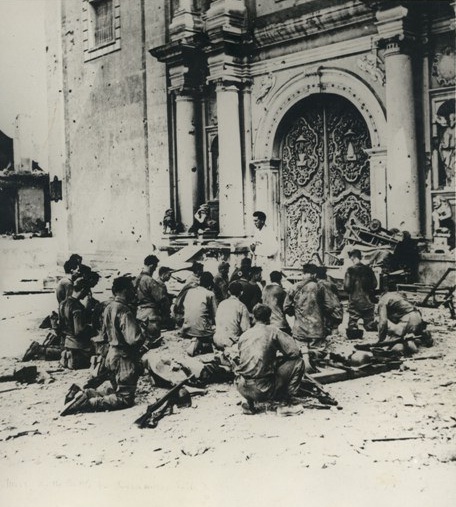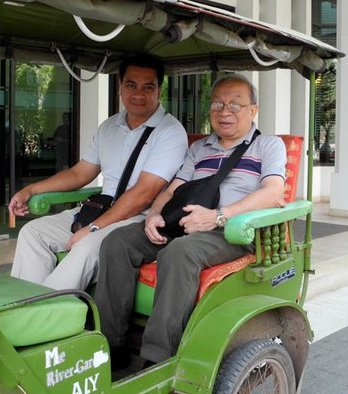
By Jose Bayani D. Baylon
As the country remains gripped over the incident that cost the lives of 44 members of the PNP Special Action Force, I could only remind myself that war is never pretty. Now, someone might say, the 44 were not in a state of war as they were simply carrying out a police operation the like of which they were sworn to conduct. True, but the reality was that they were operating in an area so prone to war, or at least to skirmishes that fall short of war, and that is why we have been witness to a parade of flag-drape caskets amid grieving fathers and mothers, wives, brothers and sisters and sons and daughters now emotionally scarred forever.
There were no flags to drape the caskets of some casualties of another war decades ago, because there was never enough time to identify the casualties anyway. But I know of this only because I have lived through stories of another war and the excesses that man commits against man, stories told me by my father, who was 12 years old in February of 1945 when Manila was in the death grip of a Japanese Army fighting off a liberating force of Allied soldiers.
Part of my dad’s stories about the last days of the war made reference to this dentist by the name of “Dr. Serguenza” who acted like the leader of all of them. It was Dr. Serguenza who would climb the pulpit of the San Agustin Church to make announcements, who moved about everyone inquiring as to their situation, trying to make the most out of something that was so wrong. While he wasn’t included by the Japanese in the long line of men who were marched to Fort Santiago, a few days later (February 23, my dad says it was), they executed him in the courtyard of the church. In San Agustin Dr. Serguenza had an adopted daughter with him; I can only wish she survived the war as well as my father did.
My father was at the San Agustin church after days of moving as refugees, from one building to another, one convent to another, one church to another. Somehow, at San Agustin, he and what was left of his family found solace near the altar while the rest of the church was populated by so many others. With my father were his three elder sisters Elisa, Gloria and Liwanag, an older brother, and their father Godofredo. Their mother had died six years earlier; a youngest sister had died, too, and one brother had gone missing after deciding he would walk along the coast of the Laguna lake to get to relatives.
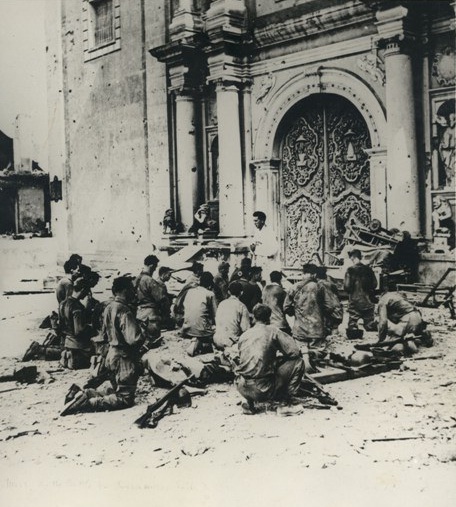
That fateful day my father tells me he had gone out to what must now be what we call Fr. Blanco’s garden, for that was where the refugees were “doing their thing” in the morning. Upon his return his father asked him for directions, which he gave…but then he noticed that his father never returned. That’s when he noticed that out in the main courtyard of the church, men were being lined up by the Japanese – and peering from behind the church’s massive doors my father saw his father at the end of the line, maybe because was the last to have been taken. His brother was in the line, too.
The father saw the son peering from behind the door – and my dad tells me that his dad started making hand gestures like he was being dismissed. “Maybe he didn’t want me to be seen, maybe he was afraid that if the Japanese saw me I would be lined up too” was how my dad once explained it.
And then the line began to move, and that slow march towards Fort Santiago began.
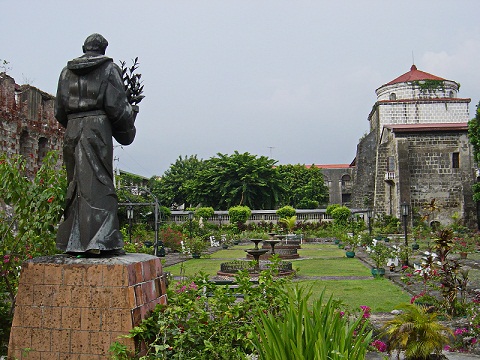
That was the last time my father, the 12 year old, ever saw his father (and brother) alive.
In the 1960s, when my father received a State Department grant for further medical studies in the United States, he would, he told me, sometimes imagine bumping into his father – by then already old and wrinkled – on some US city sidewalk, imagining that his old man had actually survived the atrocities of the last days of the war, suffered some form of amnesia, and had been evacuated to America. I can imagine so many war survivors thinking that way, and in fact remember hearing a similar story from a female survivor of Auschwitz.
But in her case, as in my dad’s, no such luck.
And that’s the reason why, for as long as I can remember, we have been lighting candles every November 1st at the foot of the white cross that has been erected inside Fort Santiago, to commemorate the over 400 bodies discovered in a nearby dungeon. Over the years I have noticed how the number of candles being lit every year has been dwindling, so much so that a year ago there was only one left – that which my father, now stooped, wrinkled and grey, had brought to light. I suppose when I am gone myself even that last candle will disappear and the last stories of February 1945 (at least from my family) will die out forever.
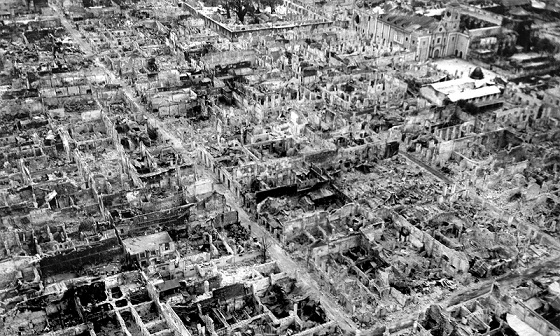
It is interesting that not once did the three elder sisters who survived the war with my father ever share stories about their war experience. Not once. Never. And through the years, whenever we would be at the white cross, all they would do is quietly wipe away their tears.
Now the three of them are gone, too, and all that is left is my father.
And so I share this story now, on the 70th year of the liberation of Manila, because if we don’t remember how war is never pretty we will always be at risk of hearing new stories from 12 year olds who will surely, if not visibly be, scarred forever.
